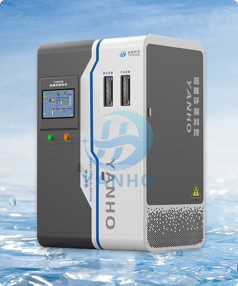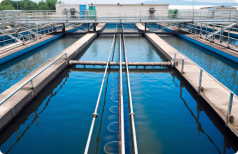High salt wastewater treatment

High salt wastewater refers to wastewater containing organic matter and at least total dissolved solids (TDS) with a mass fraction greater than 3.5%. Due to the presence of organic pollutants and a large amount of soluble inorganic salts such as Cl -, Na+, SO42-, Ca2+, etc. in such wastewater. So, this type of wastewater is generally the limit of biochemical treatment.
Equipment Process
Selection of biological treatment process for high salinity wastewater: The biological treatment process for high salinity wastewater is basically the same as the ordinary biological treatment process, mainly including regulating tank, aeration tank, secondary sedimentation tank, sludge reflux, excess sludge dewatering, and adding nutrients.
Equipment Advantages
-

Not afraid of the cold, beneficial for insulation
The treatment of high salt wastewater is buried underground, which is beneficial for insulation. It can still operate normally in cold seasons in the north, without disturbing people`s noise and imperial flavor
-

High degree of automation
High degree of automation, unmanned, automatic operation, faults, easy for daily management
-

Low operating costs and energy consumption
Low operating cost, large gas volume, lower energy consumption than other gas products, small bubble diameter, more dissolved hydrogen, high oxygen utilization rate, therefore intermittent aeration can be used, with ultra-low power consumption
-

High efficiency and short cycle
High pollutant degradation efficiency and short debugging cycle
设备参数
Application Area
-

Printing and dyeing wastewater
-

RO concentrated water reduction wastewater
-

Desulfurization wastewater
-

Electroplating wastewater
-

Chemical wastewater
CONTACT US

Official Account


Mobile Browsing






 Hotline:
Hotline: Address:No.76 Longfei Road, Chengyang District,Qingdao, Shandong Province, China
Address:No.76 Longfei Road, Chengyang District,Qingdao, Shandong Province, China E-mail:y15092162376@163.com
E-mail:y15092162376@163.com